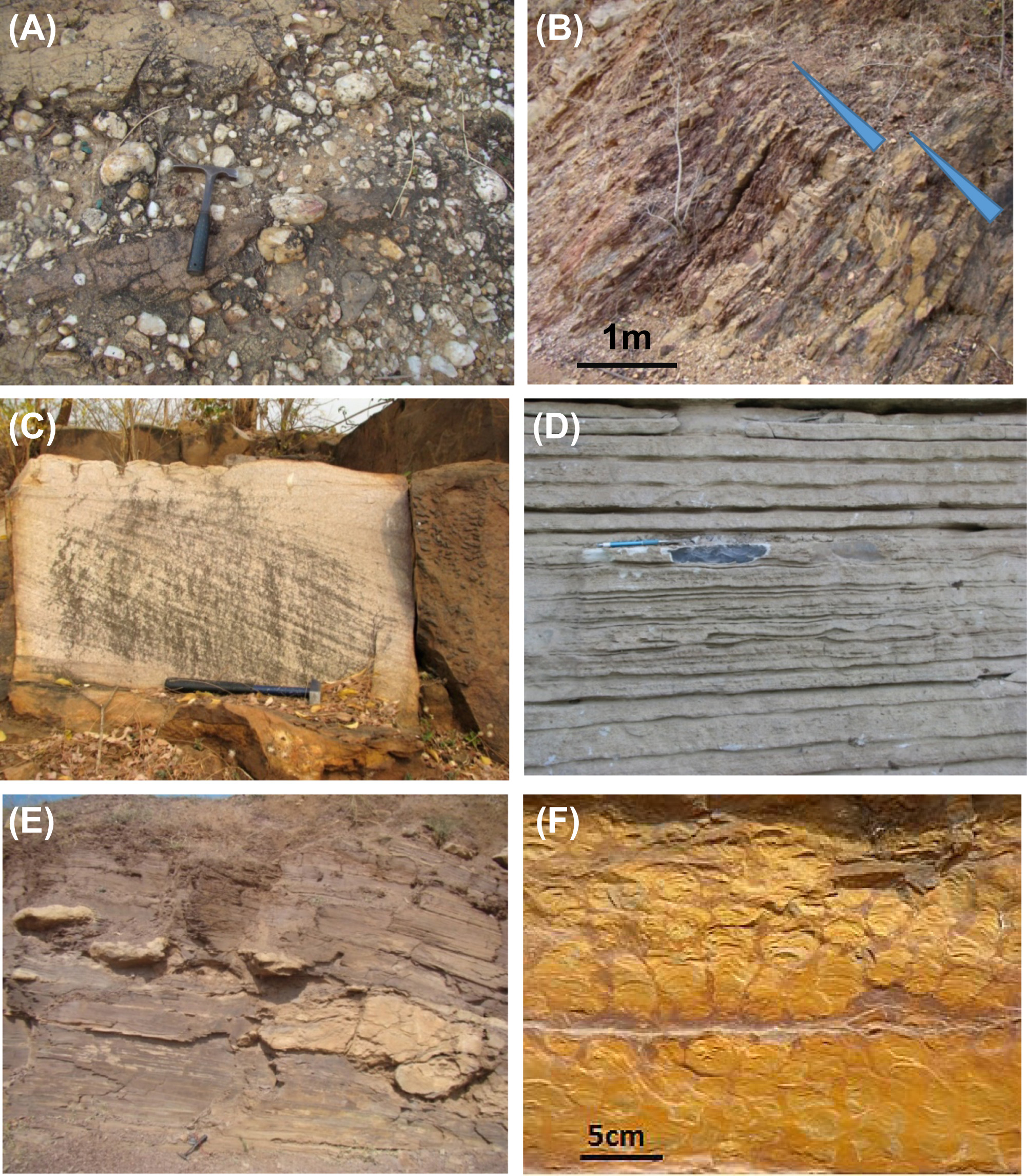Saradih Limestone Fm
Type Locality and Naming
Lithology and Thickness
Limestone, with slate, chert and dolomite; and stromatolite bearing (Fig – Image F). Small isolated bioherms are "profusely developed in the Saradih/Chandi Limestone". The carbonates are mostly micrite with minor dolomitization at places. Early lithified intrabasinal lime clasts occur as a
subordinate constituent, and calcareous peloids occur in a very minor amount.
[Figure: Chattisgarh basin Field photographs illustrating lithology and sedimentary structures. (A) Lohardih Fm - Poorly sorted, matrix supported ungraded, conglomerate. Note the occurrence of large fairly rounded clast with relatively smaller angular clasts. (B) Gomarda Fm - Sand-mud heterolithic rocks. Note the successive fining upward cycles marking cyclic change in depositional environment. (C) Kansapathar Sandstone Fm - Cross-stratified sandstone. (D) Sarangarh Limestone Fm (Charmuria Limestone Fm) - Limestone-marl rhythmite. Bed thickness: 2-10 cm and separated by mm thin marl layer. (E) Gunderdehi Shale Fm - Upper part of with stromatolite bioherms appearing as isolated pockets. (F) Saradih Limestone Fm (Chandi Limestone Fm) - Stromatolitic limestone. Note that stromatolite columns are nonbranching and branching with two to six branches. Column height 5-15, width 1-3 cm. (from Saha et al., 2016)]
Relationships and Distribution
Lower contact
Overlies the Gunderdehi Shale Fm
Upper contact
Rapid change to the overlying Churtela Shale Fm (Tarenga Shale Fm)
Regional extent
Chandi Limestone is equivalent to the Saradih Limestone in the eastern part of the Chattisgarh basin.
GeoJSON
Fossils
Age
Depositional setting
Carbonate platform. Table 3 in Saha et al. (2016) also indicates tidal shelf to minor fluvial (lower portion?)
Additional Information
